What to Do in Durres, Albania: 16 Ways to Enjoy the City (2025)

Albania’s second largest city is often overlooked in favour of Tirana or the more famous beach towns further south. And before arriving in Durres I wondered what I would do there for 10 days.
But Durres is worth visiting. It has a great mix of history, seaside charm and laid back atmosphere. In the end I wish I could have stayed longer!
What to Do in Durres, Albania
While Durres doesn’t have a long list of things to do, it does have a few attractions. It’s not a tourist hot spot the way Saranda is. Durres is more of a local, working city.
The real pleasure of Durres is in slowing down and enjoying doing the things that give the city its unique atmosphere.
Want a longer trip? This 14-day Albania itinerary shows you how to fit all the highlights in.
1. Explore the Durres Amphitheatre
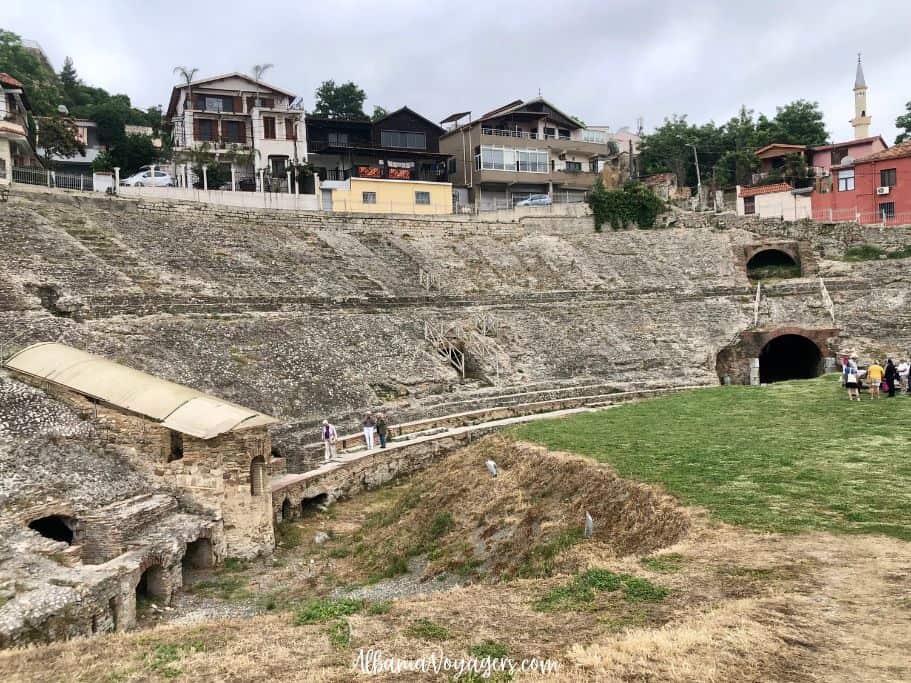
The amphitheatre is the most impressive of the things to see in Durres. It was built sometime in the 2nd century AD by Roman Emperor Trajan. It’s the largest amphitheatre in the Balkans, and used to hold up to 20,000 spectators.
It’s been through two major earthquakes, been rebuilt, totally built over and then excavated. Part of the amphitheatre is still covered with modern construction, and houses sit perilously close to the ancient ruin.
There’s a section of 6th century religious mosaics belonging to a small chapel built on the site. It’s worth seeing, but the site is in danger as it’s not well preserved.
Admission was 300 lek ($3.50 USD) when I was there.
2. Climb the Venetian Watchtower
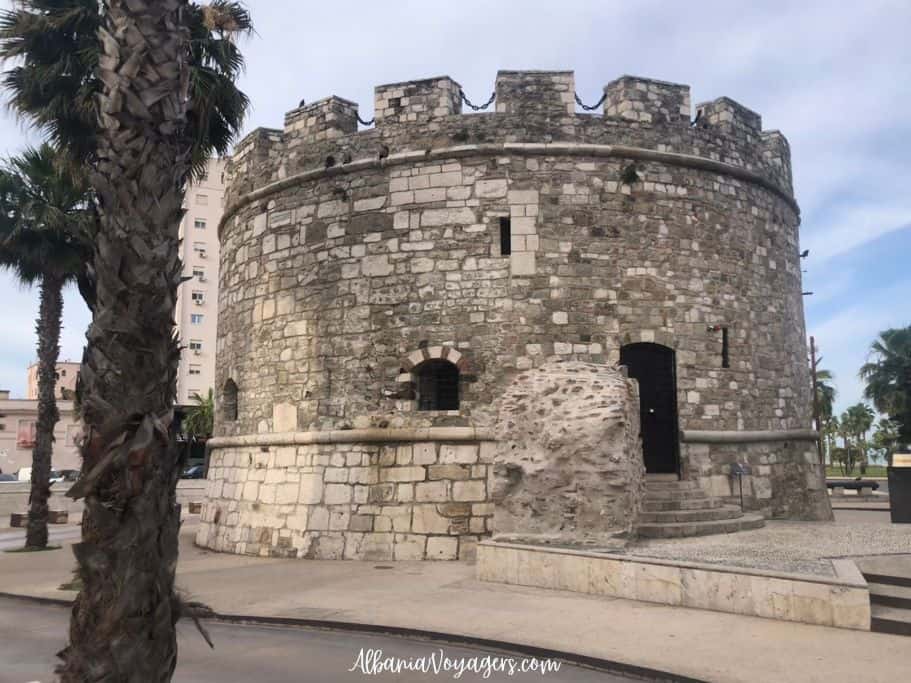
This watchtower formed part of the medieval fortification wall that surrounded Durres. It was built by the Venetians in the 14th century after they conquered the city.
Parts of the ancient fortification walls are still in this area. You can see them walking down Rruga Anastas Durrsaku (toward the watchtower) and beside the Great Mosque of Durres.
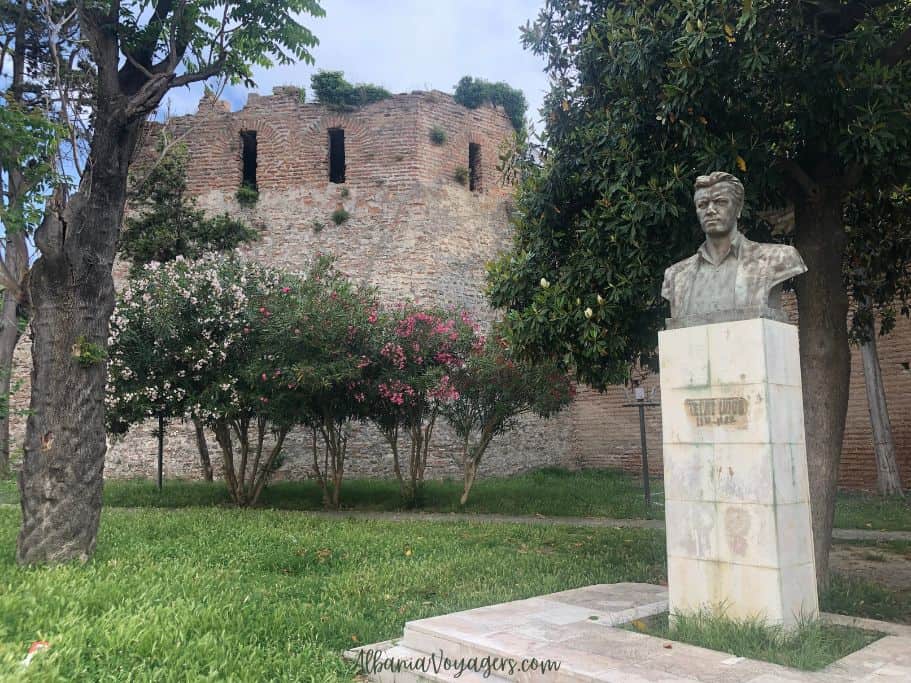
Apart from the incredible accoustics inside the tower, I didn’t think this site was very impressive. It’s obviously been rebuilt and there’s not much to see. The views from the top are okay, but not spectacular.
I thought the remaining fortification walls were far more interesting and pretty (and free).
Admission was 600 lek ($7 USD) when I visited, and 300 for seniors.
3. See the Great Mosque of Durres
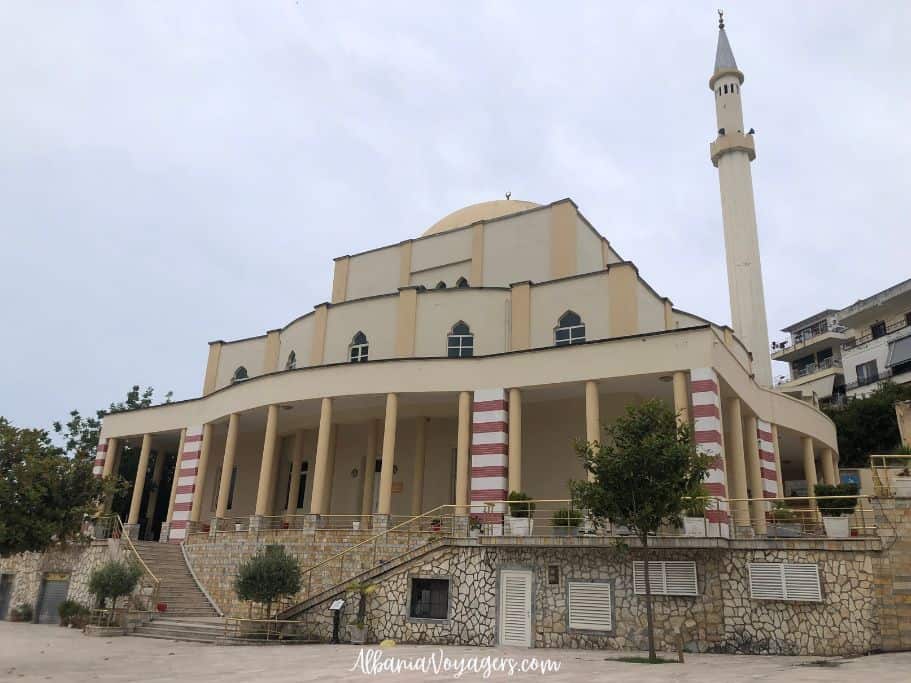
I tried to get inside the Great Mosque twice, and both times it was closed. So I’m not sure what it’s like inside, but maybe you’ll have better luck than I did.
It will be free to enter (but shoes must be removed and women have to cover their heads), so you may as well try. You can’t miss it – the mosque is located very prominently on the main square.
The mosque was built in 1931 on the site of an older mosque. At that time it was the largest one in Albania. When Albania became a communist dictatorship all mosques were closed, and this one became a youth centre. It re-opened in 1993.
Albania is 51% Islamic, but because religion was forbidden during communism (1944-1991), the country is almost non-practicing.
The rebuilding of mosques and construction of new ones has been heavily subsidized by the government of Turkiye and associations like the Muslim World League.
4. Walk Around Byzantine Market Square
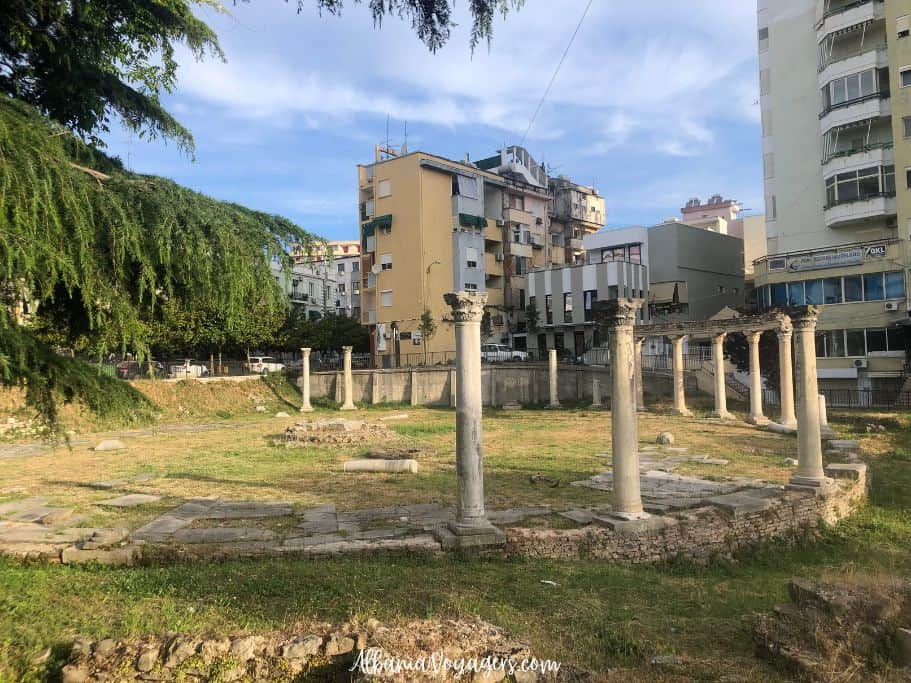
These are remains of an ancient Roman market attributed to emperors Justinian and Anastasios in the 6th century AD. Apparently there is a well and marble tiles, but the site is fenced off so you can’t walk through it to get a close look.
You can walk around it though and still see it clearly, which is what I did. Free.
5. Visit the National Archeological Museum
Durres has the largest archeological museum in Albania.
It’s been closed for restoration since 2021. It was scheduled to reopen in April 2025, but I was there at the end of May and the construction was still on going. Check the current status when you’re there, hopefully it will be open!
Judging from Durres’ Byzantine and Venetian history, the museum probably has a great collection.
6. View the Church of Apostle Paul and Saint Asti
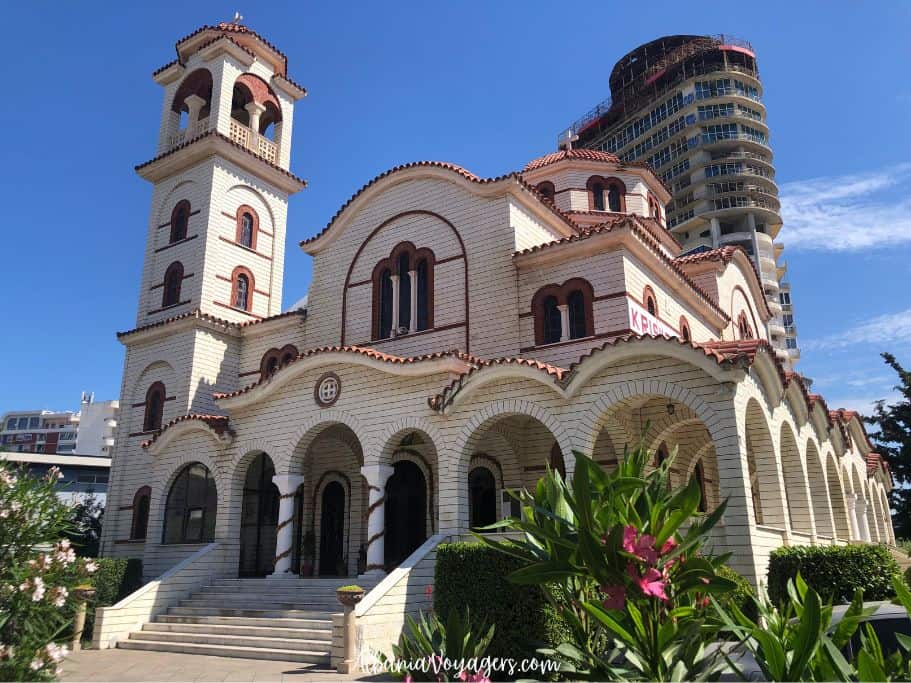
This is a relatively new Orthodox church, but still beautiful inside with vaulted ceilings, traditional icons and a huge chandelier. It’s free and absolutely worth a look.
It’s named for St Paul, who was the first apostolic preacher in Albania, and St. Asti who was martyred in Durres in 100 AD.
7. Pay Respects at Martyrs’ Museum & Mausoleum
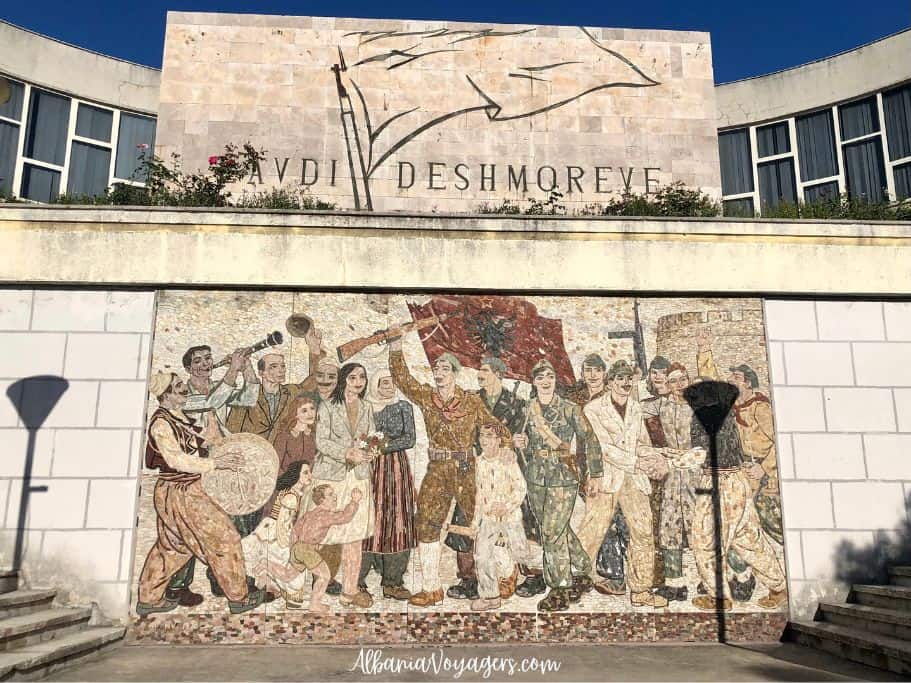
The museum is now closed, but the mausoleum is still accessible. It’s really interesting with plaques dedicated to soldiers who died during the Albanian Patriot Movement in the 1920s and WWII.
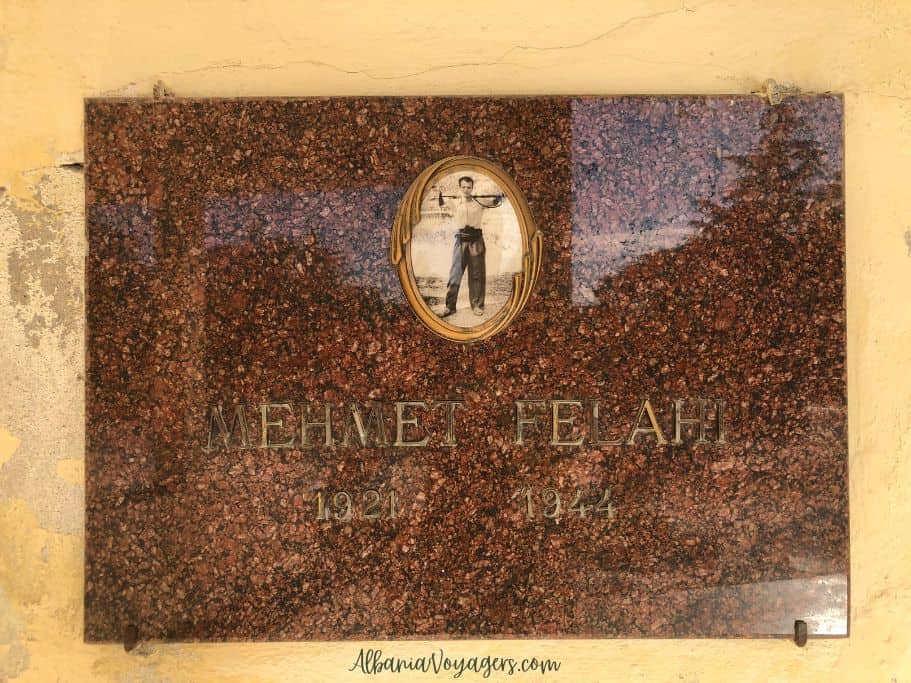
It’s one of the most peaceful sites in Durres, with gardens in the front. When I went, there were a few locals relaxing with their morning coffee in the gardens. There’s no admission fee.
8. Eat Seafood
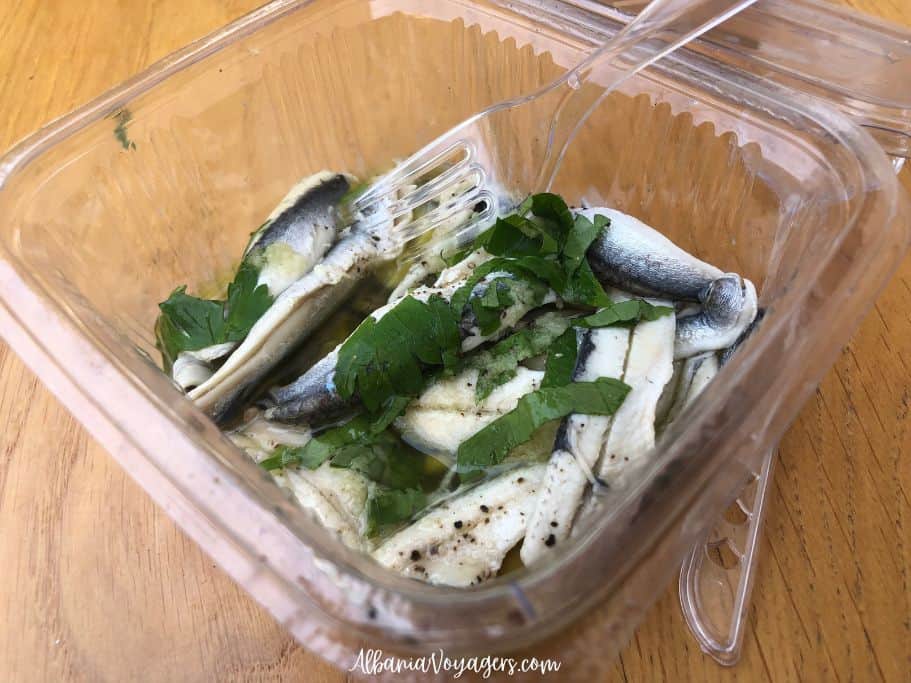
Durres is right on the Adriatic coast and there is amazing seafood! I found fantastic places to eat in Durres that had fish at very reasonable prices.
If you eat along the beach you’ll pay more, but prices come down once you get into the more local areas. Durres is small, so you don’t have to go far to get away from the tourist zone.
In Albania, fish restaurants are called restorant peshk, and Durres has many. Even regular restaurants usually have some fish on the menu.
9. Take an Evening Stroll along Taulantia Promenade to Sfinksi
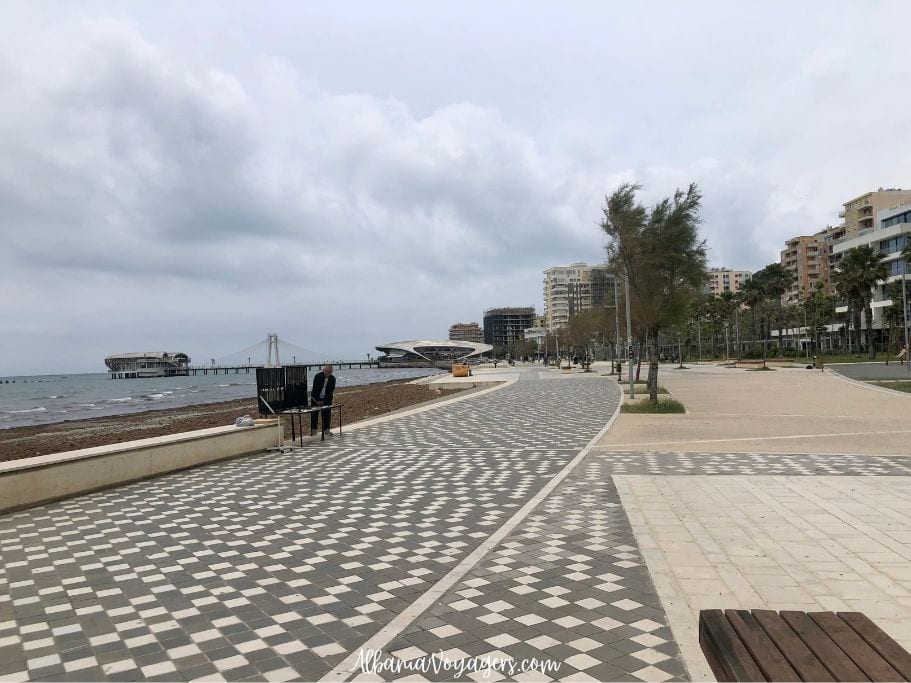
The Taulantia Promenade is a popular pedestrian sea front promenade that runs behind Rruga Taulantia.
It starts after Vollga Park and ends just past Sfinksi. They were still working on it when I was there, so it may be longer when you visit.
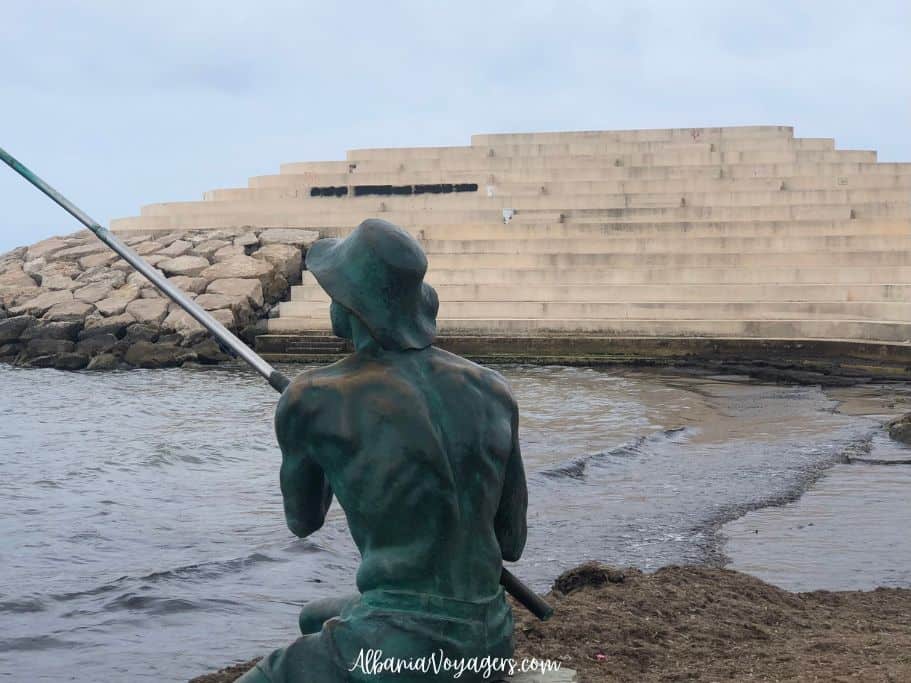
I am not a fan of the cement block look of Sfinksi, but it is supposed to look like Sphynx in Egypt.
10. Go Byrek Hopping at Byrek Corner
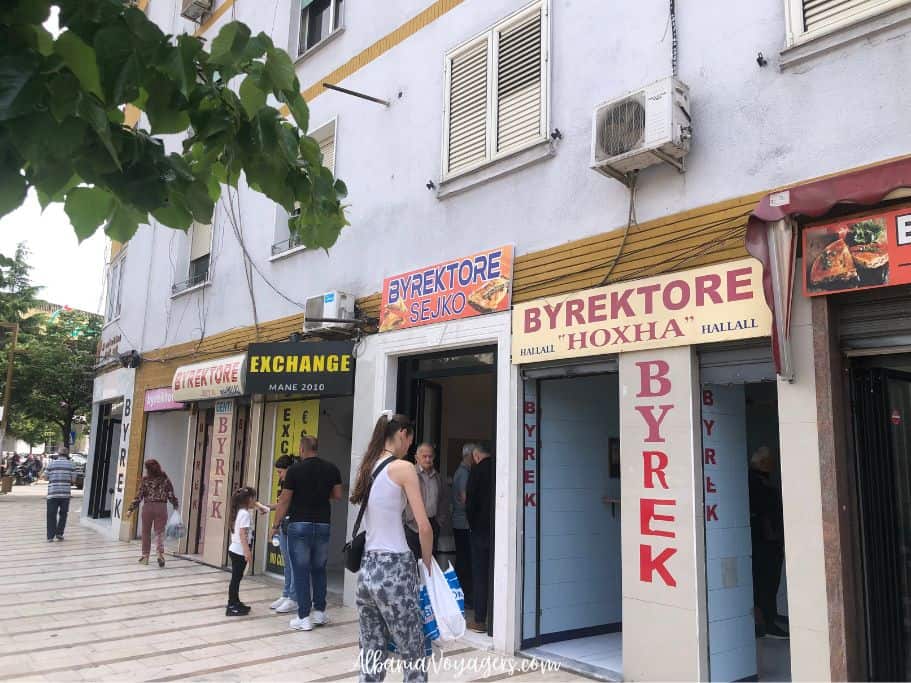
This is not really called Byrek Corner, I named it that because there are at least 8 different byrek shops in a row here. It’s the corner of Rruga e Deshmoreve and Bulevardi Dyrrah, near the bus station.
Byrek is Albania’s favourite street food. It’s a pie made of phyllo and traditional fillings like potato, spinach, meat, cabbage, or cheese. You’ll see a lot of people eating these in the mornings. Byrek is delicious!
I sampled byreks at 5 of these shops over 2 days. My favourite was the shop with the white sign ‘Byrektore’ next to the money exchange.
You’ll pay local prices here ranging from 60 to 140 lek ($0.70 to $1.60 USD).
11. Enjoy a Street Side Cafe
I think there are more cafes in Durres than in Tirana, which I wouldn’t have believed possible! They are everywhere. I doubt there is a block anywhere in Durres without a cafe.
And the cafes are full of locals, not tourists. This just adds to the laid back charm of Durres. So definitely enjoy a break at a cafe when in Durres, it’s a very cultural thing to do!
12. Go to the Beach
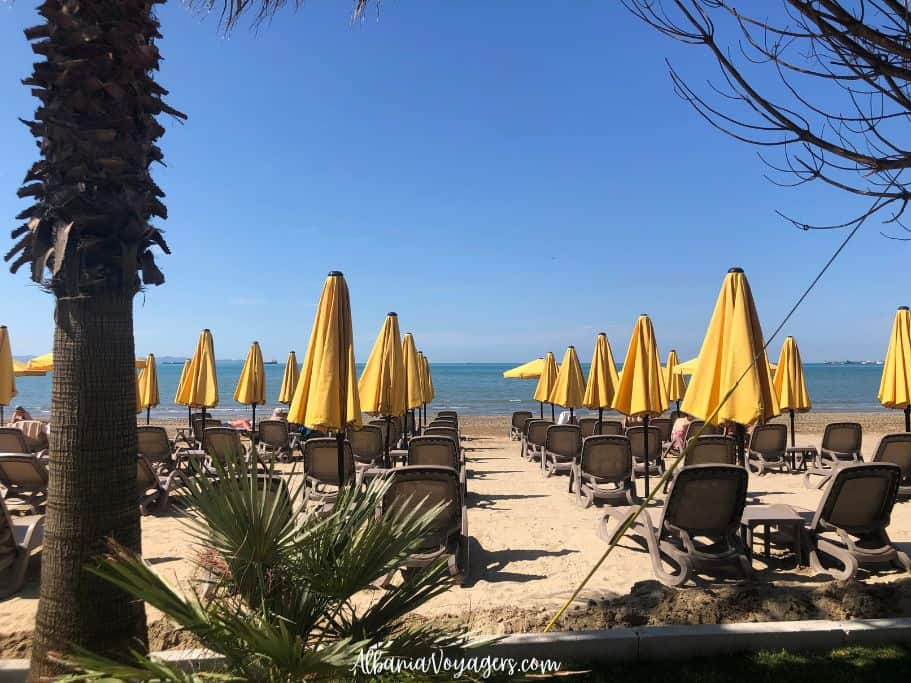
The beaches are why most people visit Durres. There are two main beaches near the town centre: Durres Beach and Currila Beach.
Durres Beach is south of the centre, and Currila Beach is north of the centre.
Durres Beach is the largest, over 10 km long all the way to Golem. It starts just over 2 km from the centre of Durres.
It’s a sandy beach with a busy promenade, restaurants and lots of activity. I walked there from Durres centre in about 30 minutes, but there’s a bus you can take.
Currila Beach is smaller and quieter, but it’s about 5 km from the centre and you need a car to get there. There’s no bus service.
13. Have a Coffee or Cocktail at a Beachfront Bar on Rruga Currila
One of the best things about vising a seaside city is enjoying a meal or drink by the water. Rruga Currila has many restaurants and bars by the beach. I walked past them all one morning and saw quite a few people having coffee and beer.
Some looked very casual, but others looked like night clubs or high end lounges.
14. Take a Free Walking Tour
This is something I like to do when I arrive in a new city. It’s a great way to get acclimated and get insider tips (I always ask questions about where the locals eat).
Unfortunately, I completely forgot to do this in Durres until I ran out of days. But Durres does have a 2 hour free walking tour most days.
I always book my free walking tours through GuruWalk. I did a great one in Tirana a few weeks before visting Durres.
Just in case you didn’t know, a free walking tour is not free. You pay what you feel it is worth.
15. Do a Day trip to Golem
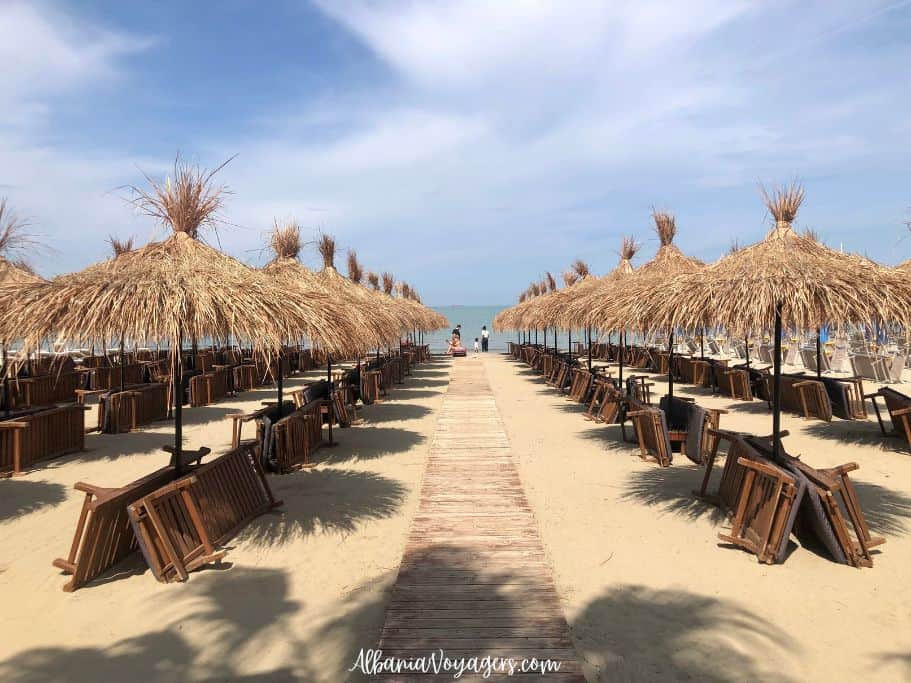
Golem is a small beach town 12 km south of Durres. It used to be a fishing village, but is now a popular Albanian beach destination. If you have two or three days in Durres, visit Golem.
There isn’t much going on in Golem except for the beach – but it’s really nice! Golem Beach is a continuation of Durres Beach, but because it’s further south it’s cleaner and quieter.
Golem is much smaller than Durres, and has more of a resort atmosphere.
I took the local bus from Durres Central Bus Station to Golem. It took 30 minutes and cost 100 lek ($1.15 USD). I did the same thing going back.
16. Take the Ferry to Italy
Durres is connected to Italy by two ferry routes: Durres-Bari and Durres-Ancona. The crossing to Bari is the shortest, 10 hours. The Ancona crossing is 16 hours.
You can buy tickets online or directly from the ferry companies at their offices near the port.
I check ferry schedules on the Direct Ferries website, than go directly to the ferry companies to see if tickets are cheaper.
When I purchased my Saranda to Corfu ferry tickets they were 5 euro less (each way) in person at the ticket office, than online.
Last Words on What to Do in Durres, Albania: 16 Ways to Enjoy the City
Durres doesn’t have a long list of things to do, and you can probably cover all the sites in a couple of days. The real charm of Durres is in the laid back local vibe, and the beaches of course!
